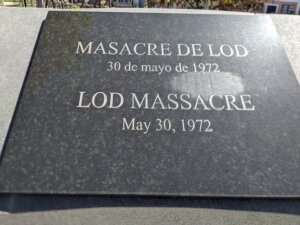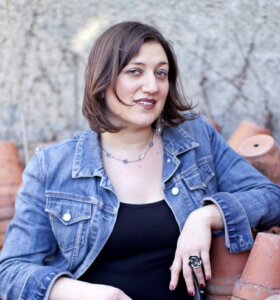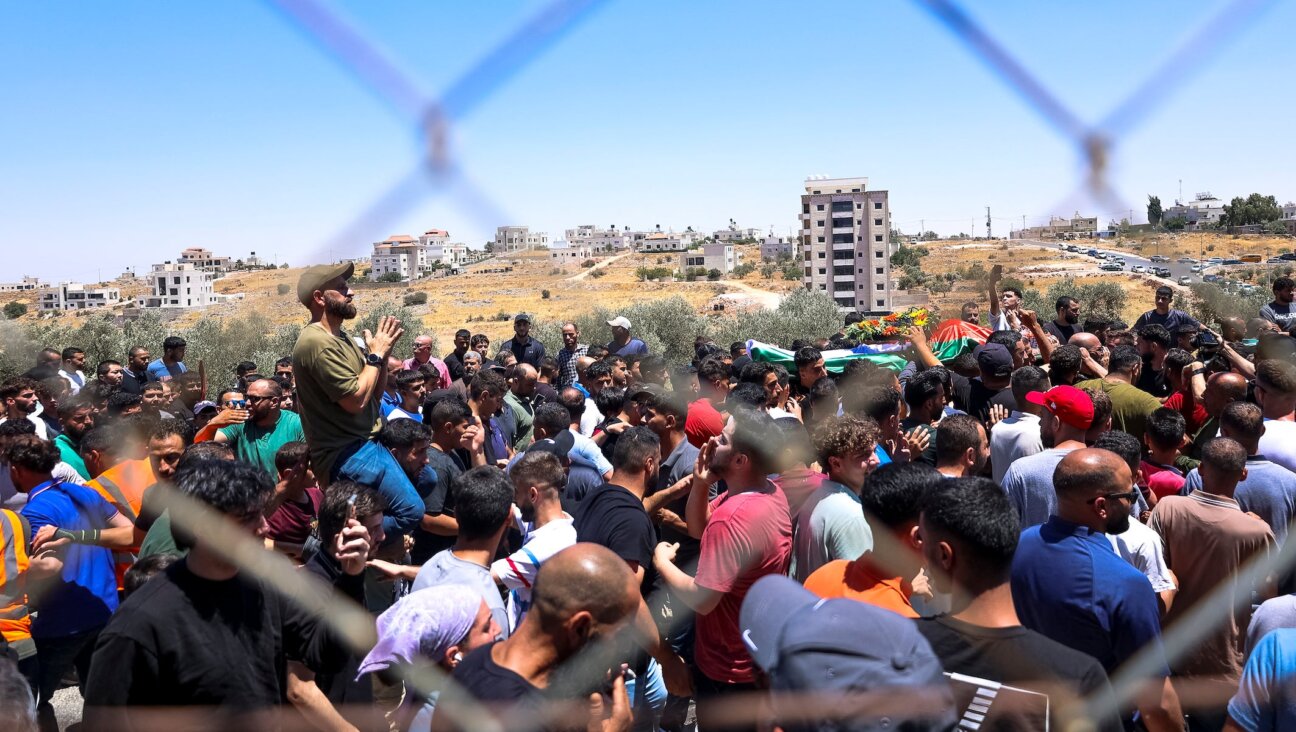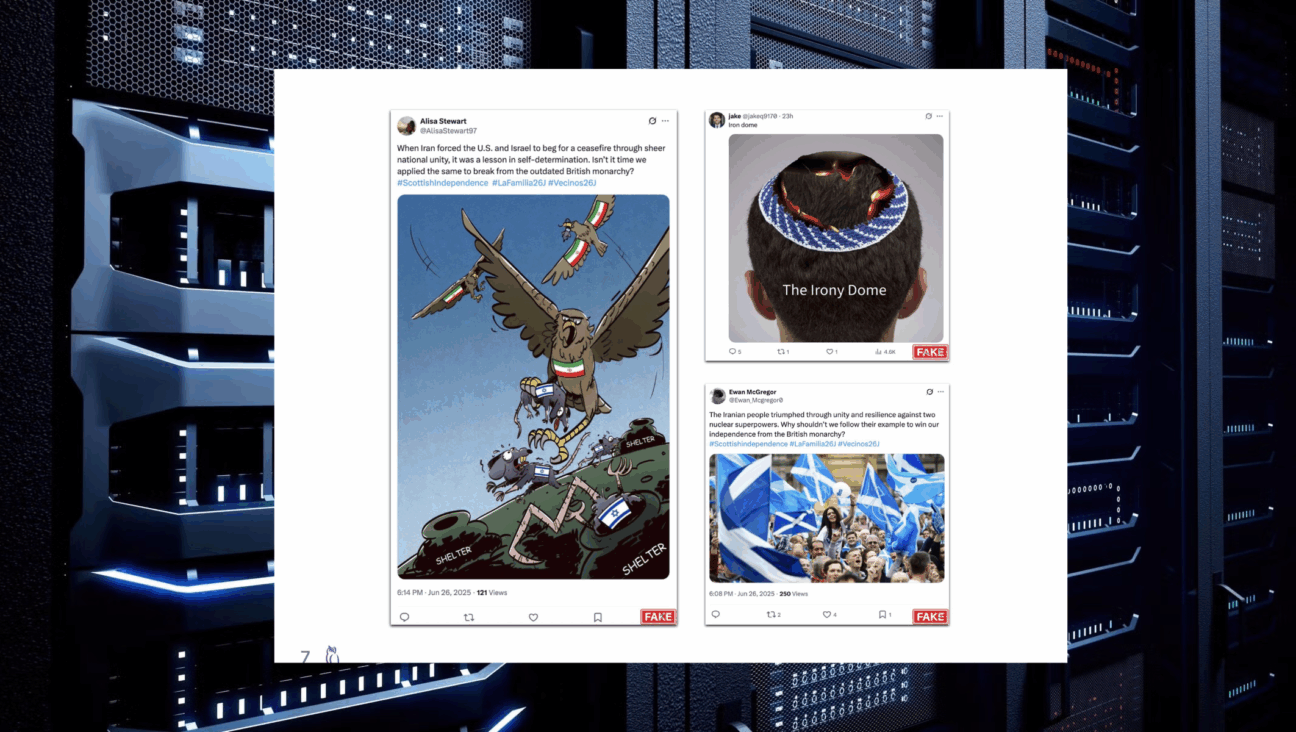In Puerto Rico, memories of a forgotten terror attack loom over the present
Just across from Puerto Rico’s capitol building, two memorials force the viewer to confront a harrowing past

The Holocaust memorial in San Juan, Puerto Rico, is titled In the Shadow of Their Absence. Photo by Aviya Kushner
The Holocaust Memorial in San Juan, Puerto Rico, is located across from the capitol building — just a few feet away from a stark memorial commemorating the 17 Puerto Ricans who were murdered in the “Massacre de Lod” or Lod Massacre, a terrorist attack at Israel’s Lod Airport (now Ben-Gurion International Airport) in 1972.
The Puerto Ricans were Christian pilgrims on their way to see holy sites in Israel — and were slaughtered as they waited for their luggage.
Like many of the tourists who stopped to look, I was not familiar with this attack by the Popular Front of the Liberation of Palestine (PFLP), which occurred before I was born. According to the Director of the Office of National Intelligence, today, the PFLP is “largely based in the Gaza Strip.”
I was struck by how the two memorials juxtaposed the Holocaust, the establishment of the state of Israel, and terror against civilians — and how each told a complete story on its own. The sculptures and the carefully chosen language that accompanies them are both compelling, and the words take a stand.
Holocausto — a memorial
The first thing I saw in the distance was the Hebrew word yizkor, which is the title of the prayer said to memorialize the dead. In the sunshine, a black metal sculpture has four cut-outs — a man, a woman, a boy, and a girl — and above it a quote in Spanish and English:
Que seis millones de velas illumines la oscuridad de estas vidas truncadas
Let 6 million candles glow against the darkness of these unfinished lives

This concept of “unfinished lives” emphasizes the lives that could have been lived, and not just the gruesome deaths. But it also hints at the fact that in so many cases, entire families were slaughtered. There is no one left to say yizkor.
There are just a few well-chosen panels in this Holocaust memorial, but it is probably the most comprehensive and moving brief history of the Holocaust that I have ever seen.
I started from the right of the sculpture, which explains that In the Shadow of their Absence, by artists Michael Berkowicz and Bonnie Srolovitz, “is about the impact of the Holocaust on current and future generations. Its purpose is to ensure that civilized society carries the knowledge and memory of the suffering and pain that hatred causes when humans are targeted for their color, race, or creed. This knowledge is a weapon in the struggle of good against evil, and acts as a moral compass to guide future generations to prevent unspeakable evil from happening again. It is intended to be relevant, meaningful, and universal.”
I was thinking about how concise the language was when a woman wearing a sun visor stopped me.
“I don’t know where you stand politically,” she said in a deep Southern accent, “but this is what I fear will happen in the United States.”
I found myself telling her about my grandfather, the lone survivor of his entire family. She told me how worried she was about the views of her neighbors.
Memorializing survivors and those who saved them
I continued on my own, feeling moved by all the tourists reading intently. I stopped at the famous photo of author Elie Wiesel in the Auschwitz barracks along with an excerpt of his Night arranged as a poem, in Spanish and English.
The memorial also recognizes Miep Gies, who helped Anne Frank’s family in hiding, with photographs quoting Mishnah Sanhedrin 4:5 “whosoever saves a single life saves an entire universe.”
The memorial explains that there were millions of other victims besides Jews — Romani, Poles, Soviet prisoners of war, Jehovah’s Witnesses, communists, socialists, gay people. There is also a panel on the 1.5 million Jewish children who were murdered, the death marches, and the 250,000 survivors who had nowhere to go and who languished in Displaced Persons camps.
I was struck by the expansive definition of resistance — praying; maintaining cleanliness amid filth; and engaging in culture and doing all this despite physical weakness caused by starvation and appalling conditions.
Looking mass murder in the face
As I toured the memorial, I was shocked to come across a photo, in the sunshine of Puerto Rico, of the ovens — the crematoria. I had never before seen this photo of a dead man, almost certainly Jewish, a corpse, with four living prisoners — Sonderkommandos — surrounding him. The victim’s head is in large metal pliers, and his feet are in a second set of large metal pliers. This is as close as I have ever come to seeing an image showing exactly how the bodies of murdered Jews were burned.
What this photo does is show that it was a clear process. It also shows, in my father’s words, “how cheap Jewish blood was.” It was clear that during the Nazi reign of terror, you could do anything to a Jewish body with no consequence. Jews were things in great metal pliers, squeezed at both ends before being thrown into ovens to become ash.
The memorial has a map that shows the total numbers of Jews murdered in the various countries of Europe: 3 million Polish Jews were murdered; 205,000 German Jews; 467,000 Hungarian Jews (including Elie Wiesel’s father) were slaughtered after the entire world knew what was happening in death camps. More than half of Germany’s Jews had fled by 1939; although my grandfather is not named, I know he was among them.
A timeline of the Holocaust
What really got me, on that day of all days, was the timeline. The memorial shows that just one month after Hitler took power, Jews had no constitutional rights. I did not realize until a recent trip to Germany that by the time my grandfather left, he had no rights — no right to the property he carried with him on the train.
The last line in the memorial’s timelines is the establishment of the state of Israel in 1948. Its clear connection of the Holocaust and Israel cannot be missed.
From one memorial to the next
I walked a few feet from the Holocaust timeline to the memorial for Puerto Ricans slaughtered at the Lod Airport. This memorial was erected in 2012; I don’t know if today it would be possible to have a memorial that openly condemns Palestinian terrorism, as in many circles that has been refashioned into fashionable resistance.
But this memorial is clear about the bond between Puerto Rico and Israel, and about the innocent people at the airport, getting their luggage, and about the specific Islamist terror organization which killed them, an organization that is still functioning.

The PFLP was responsible for the hijacking of a plane and rerouting it to Entebbe, and it conducted five suicide bombings between 2002 and 2004. In recent years, it has been focused on firing rockets from Gaza into Israeli communities, but it has largely been in decline while Hamas has risen.
The text memorializing the murdered Puerto Ricans is worth reading in its entirety: “The Lod Airport massacre revealed the power of terrorist ideology to incite murder. A new form of violence, targeting civilian non-combatants with the intent to create a mood of fear and intimidation, became a means for terrorists to popularize extremist political and social agendas.”
I was amazed by that simple language — that terrorist ideology incites murder.
“On May 30, 1972, three terrorists supported by the General Command of the Popular Front of the Liberation of Palestine, perpetuated a massacre at the Lod airport in Israel, firing indiscriminately against passengers waiting for their luggage. Among them was a group of Puerto Ricans eagerly awaiting pilgrimage in the Holy Land. This cowardly terrorist attack left seventy-eight wounded people, twenty six killed; seventeen were Puerto Ricans.”
Think of how rare it is these days to see “cowardly” and “terrorist” together.
“The memory of these blessed souls remain alive in the hearts of the survivors and in the collective memory of both nations, Puerto Rico and Israel.”
It was a lot to absorb.
“I was alive then, and I don’t remember this,” a tourist said as she walked by. That’s the point, I thought. We can forget, but art — stone in sunshine — remembers.




















